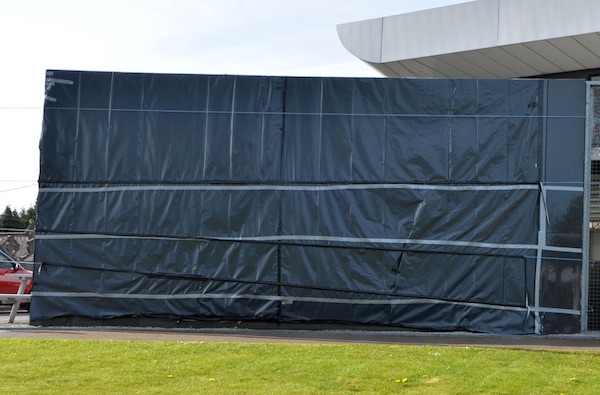
An infamous memorial in Dublin which commemorated members of the British forces who died trying to defeat Irish independence is to be taken down.
The wall of names was unveiled during the Easter Rising commemorations in April 2016. It sought to memorialise infamous British merecenaries such as the Black and Tans alongside heroic Irish rebels who bravely fought against them for Irish freedom.
The wall was supported by prominent 26 County unionists such as Charlie Flanagan. His attempts to hold an official Irish state commemoration for the same forces of the British occupation two years ago provoked international criticism.
Prominently sited at the hallowed ground of Glasnevin Cemetery, the final resting place for generations of Irish revolutionaries, the ‘necrology wall’ infuriated Dubliners over the past six years and became known locally as the ‘wall of shame’. It was increasingly attacked with paint and even sledgehammers, raising concern for other memorials at the site.
On Friday, it was announced by the Glasnevin Trust that the memorial had finally been abandoned due to the high cost of its continued protection and maintenance.
Flanagan, a former Fine Gael Justice minister, said the decision was due to “bullies” who he said had disregarded the “multiple narratives of these islands.”
However, Dublin City Council independent councillor Cieren Perry said the decision was a “victory for common sense and most importantly a victory for those of us who revere, admire and respect those who sacrificed their lives for the freedom of our country”.
Former Republican Sinn Fein leader Des Dalton said the removal of the “shameful” monument was welcome.
“Would the French erect monuments to the German forces of occupation or the Vichy forces who collaborated with them?” he asked.
Saoradh also welcomed the decision. “This project was an insensitive and poorly thought-out concept when it was mooted first,” they said.
“It sought to put the names of volunteers who died for Ireland’s freedom to be placed alongside those that wished to crush our liberty and put our people down between 1916-23 without any political context.
“Issues as complex as imperialism, colonialism, republicanism for example were to be simplified away and Ireland’s age-old struggle and complicated past to be packaged as a handy spot for a photo opportunity for those who push the normalisation agenda..
“The Glasnevin Trust, like sections of the establishment who wanted to see the RIC commemorated, have realised that they have misjudged the public mood; who rightly object to this. People are fed up with being talked down to and having a normalisation agenda forced on them.
“They are also angry when part of our revolutionary history gets erased, like in the case of Moore Street for example, while the green light is given to gimmicks like this.”
![[Irish Republican News]](https://republican-news.org/graphics/title_gifs/rn.gif)
![[Irish Republican News]](https://republican-news.org/graphics/title_gifs/harp.gif)

